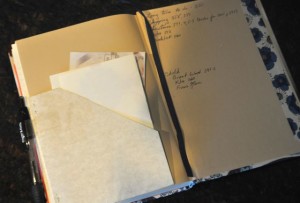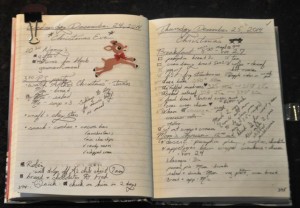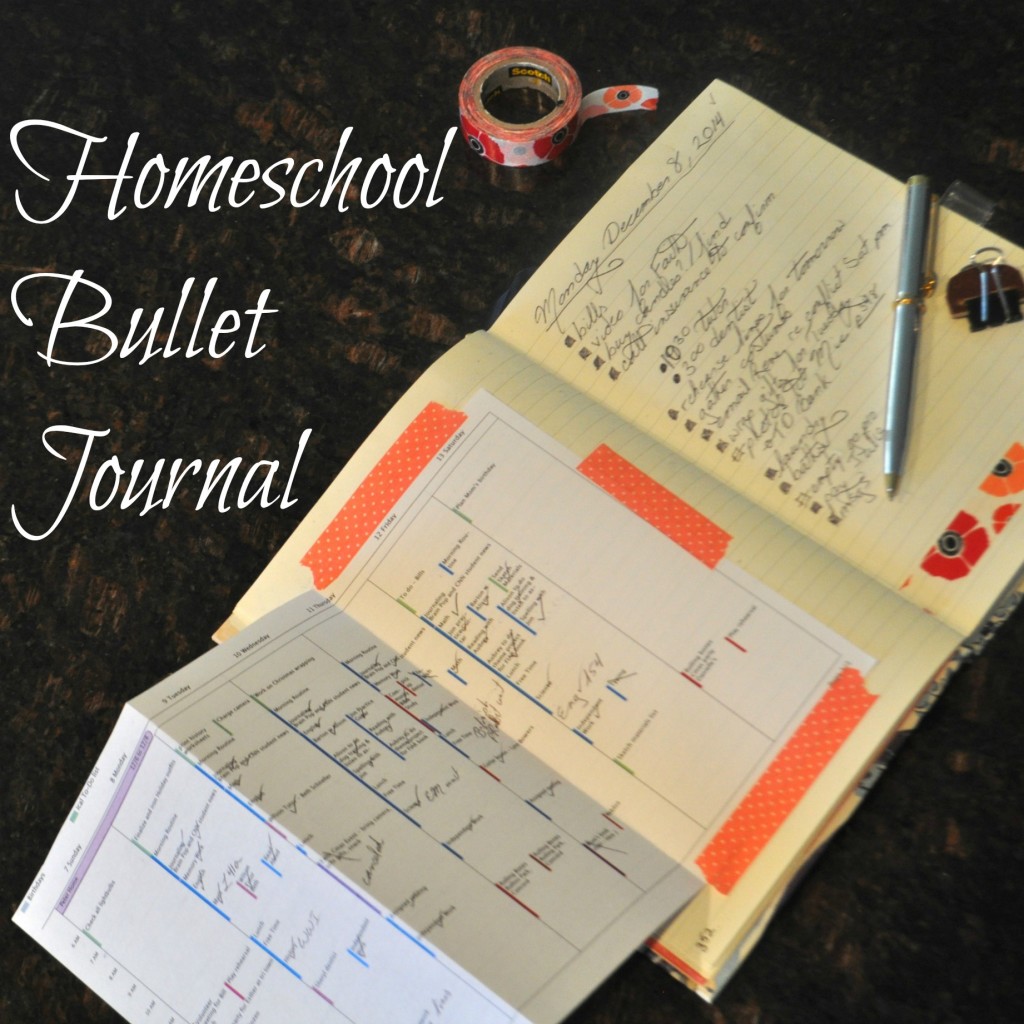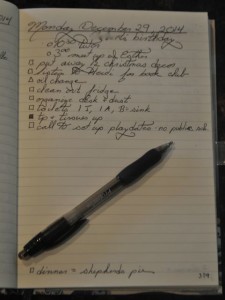I am an organization junkie. It is a bit of an obsession. Pretty notebooks, color-coding, baskets, all of it makes me happy. You would think that my tools would capture all of my brilliant homeschooling ideas on their own for all the joy they bring me, but no tool will cure a mushy brain unless it is used well. In the words of Daniel Henderson in The Deeper Life:
“You can usually tell how disorganized someone is by how many different sizes and types of paper they use to write things down–or how many to-do lists they have on their computers, iPads, or smartphones. ”
Um… Yup, that was me. Enter, the Homeschool Bullet Journal system.

The quick explanation – What is a Bullet Journal?
Bullet Journaling is a method of organizing/planning developed by Ryder Carroll. It is simplicity and flexibility at its finest. The main point – don’t create multiple places that you have to look for information, and don’t worry about imperfection. Instead use only one notebook with page numbers, and create an index so that you can find everything you need in just one place.
I know, I know it sounds too simple -but it really works, I promise! If something is in my bullet journal it gets done. Every time.
I have always been a list-maker. I had post-its on books, grocery lists on the fridge, and to do-lists everywhere. At some point I found GTD and loved the capture portion, but that was just another list to misplace. My system wasn’t working for me. When I heard about Bullet Journals I had a DUH moment. This is what I should have been doing in the first place
The key isn’t writing the list, it is finding that list, note, or thought when you need it. http://t.co/mkZ4F2bxIG
— Sheryl G (@LibertyHH) December 27, 2014
How I use my Bullet Journal
{note: The following links are for affiliate accounts. Thanks for supporting this site.}
Starting a Bullet Journal is easy. Find any old journal and a pen. Seriously, anything will do: a half filled math notebook, a prayer journal that you gave up on, last year’s abandoned to-do list, anything. This may be the most economical organization system ever. Now, to be honest, I like to have something attractive because I spend a lot of time with this journal, but I started with just a notebook that the kids left around. Right now I’m using a hardbound one with Katsushika Hokusai’s wave artwork on the cover because it is beautiful, I’ve had it forever, and never found a purpose for it. In all honesty though, it isn’t perfect. I prefer books like this Miquelrius 8.5×6 grid notebook because they can be left open.

Many people like to also add a pen holder, and a pocket, some pretty Washi Tape, or a magnetic bookmark to mark the current day, but those are entirely optional, and possibly just distracting.
1. Add page numbers – This is the magic of the Bullet Journal, being able to reference a page regardless of where it is in your notebook. Personally I like to continue my numbering from notebook to notebook for the year (so 2014-37 doesn’t accidentally have two entries), but most people just start with 1 and work through to the end of the book. There are even some notebooks you can buy that come pre-numbered if this part seems tedious to you.
2. Set aside a page for each day with 2 for Monday (I’ll explain that extra page later) – Technically Bullet Journals are for daily lists, but this system is eternally tweak-able (yes, I just made up that word). I work best when I can take things a week at a time, spreading my work out over the coming days, so I tend to make daily pages for 1 week at a time. Advantage: I know what’s coming, yet I don’t plan so far in the future that I’m stuck with a planner that’s not quite right.
3. Add appointments – The Bullet Journal is not my calendar. That job is best done with my iPhone. But I do intentionally look at my calendar when making my weekly plan. This helps me to determine how much time I have to work with, a key element of backwards planning. I place all appointments at the top of the correct page, to help me keep my plans realistic.
4. Add regular tasks – Whether you use your own lists, Motivated Moms, Flylady, or any other system of keeping track of regular work, this is where it gets placed into daily tasks. I like to include a section at the bottom of the day to plan what we are having for dinner, which often reminds me to create a shopping list on the next blank page. This is where you simply include what YOU want to think about each day.
5. Move old stuff forward – I flip through last week’s pages and see what remains unfinished. I then use a check mark in the top corner to let me know if I’ve completed or moved all of the tasks from a particular day.

6. Add important pages to the index – Personally, I keep my index in the back rather than the front, that way I don’t have to worry about setting aside enough space. My index moves forward as my journal fills.
It bears repeating: Don’t try to make this book pretty or perfect. Add a page whenever you need to. It doesn’t matter what you write where. Really, it doesn’t. Don’t create tabs or sections until/unless you need them. The index will ensure that you will be able to find everything without having to search for hours, and thanks to your bullets and check-boxes, you will quickly be able to distinguish between what needs to be done and what you simply want to remember. Most of my pages are not decorated with washi tape or clever doodles, they are simply a list of functional check-boxes.
If a toddler needs a place to color, flip the page and let them doodle to their heart’s content, or rip out a page to hand to a friend who needs your address. It doesn’t matter if a page number is missing, or that there was a jumbled mess instead of neat notes yesterday. Turn the page – today is a new day. Pages are not comodities they are paper. Their purpose is to serve you, so use them. Messy is okay, out of order is okay, doodles are entirely optional.
7. Decide what to delegate – I’ve discovered that delegation needs to be an intentional part of my daily planning. While deciding what to do each day of the week, I also decide what I will not do, and make notes about who to ask for help.
The Homeschool Bullet Journal tweaks
Remember that blank Monday page I mentioned earlier? This is my homeschool planning system – although I really don’t think it is much of a system at all, more of an accountability check-list, but I’ve been asked about it many times, so here it is:

Weekly Schedule – I use iCal to create a repeating list of which subjects we should be working on each day. It is nothing special – math, english, etc. and then we simply do-the-next-thing. This makes my day easy. I print out a weekly calendar and tape it in. I then jot down who completed what, including the page number or chapter test if I think it is necessary, and want refer back to it later. I also make notes on this page about what I need to re-teach or skip. That’s it – I told you it wasn’t much of a system.
Long-term Planning – This is the part I love. I’m always coming up with “great” ideas, thoughts about which books to use next year, experiment inspiration, or something else for our school, but I used to loose all of these thoughts before I could implement them. With my bullet journal I can just turn the page, write down my inspiration whenever it strikes, and then add the page number to the index. Where I put it is doesn’t matter!!! The next time I sit down to plan lessons (which I do quarterly) I have only one place to go to find all of my ideas. So simple!
Digital Archive – My school pages then get photographed weekly and e-mailed into Evernote – this takes less than 30 seconds. I like having our work not only archived in case I somehow loose my journal, but searchable and printable for when we assemble our year-end portfolios.
The process is simple: Snap a photo (or scan the page to JPG) and send it to Evernote. Done! Usually I just click the share button after taking the photo and e-mail it to my Evernote account with the date as the subject line. If you don’t know your Evernote e-mail address, just watch this video.
Helpful hints:
- Wait a bit if you don’t see it immediately in Evernote. Sometimes there is a lag with the searchability feature, especially if you aren’t a premium member.
- Make sure you use lightly lined or dotted paper so that your handwriting is easier to read.
- Don’t expect absolute accuracy. Handwriting has a lot of variables. I’ve found that it works really well for me though.
I hope Bullet Journaling will be as helpful for your homeschool as it has been for ours. I like the flexibility and simplicity that this system has granted me over the past year, and I love that I’m actually getting more things done than ever before! If you are ready to get started you might enjoy taking a look at the original version:
As always, if you have any questions or suggestions, just leave them in the comments.
What makes your to-do list work for you?




I love keeping organized. For homeschooling, I normally plan one week at a time and check off each item as I do it.
Thanks for posting about this! I’d never heard of a bullet journal till now!
You are very welcome. I hope it is as helpful for you as it has been for me.
Pingback: Quickly Cut Your To-Do List in Half | Liberty Hill House
I love this idea!
Pingback: How Structured Do My Homeschool Lesson Plans Need to Be?
Pingback: Knowing the Right Thing to Do - Liberty Hill House
How does the folding weekly schedule work? Do you print one out for each week and tape it to the journal? Do you remove it or leave it in?
Thanks.
Yup. Print and tape. If I’m feeling really fancy I use washi tape. Notes are made as we go, and then I upload the finished week’s info with a single photo to Evernote. I generally leave the old calendars in my notebook simply because I’m too lazy to pull them out. They are handy to refer back to, but really my long term documentation is all in the cloud.
Hi I am struggling with home ed planners (I live in the UK so we do not need to be so strict) but I do like to keep a record of what we do, plan ideas from the week etc. I have used ones i print off the internet..but then i find everything is not in one place or I have no space for planning or i have to go somewhere else for it. My 15 year old uses a bullet journal for her planning and I am impressed. I do have a filofax that i use for personal things though that is stuffed with papers and odd things.
So with your journal you keep a page for the day you have done….then if you get an inspiring idea you jot it down and then in your index make a note of the page? and does this journal last a year or is it you use various books through out the year
HELP!! YOURS most disorganised person…..
Hi I am struggling with home ed planners (I live in the UK so we do not need to be so strict) but I do like to keep a record of what we do, plan ideas from the week etc. I have used ones i print off the internet..but then i find everything is not in one place or I have no space for planning or i have to go somewhere else for it. My 15 year old uses a bullet journal for her planning and I am impressed. I do have a filofax that i use for personal things though that is stuffed with papers and odd things. So with your journal you keep a page for the day you have done….then if you get an inspiring idea you jot it down and then in your index make a note of the page? and does this journal last a year or is it you use various books through out the year
HELP!! YOURS most disorganised person…..
My books don’t last a full year, but I’m a verbose person by nature. I simply move on to the next book whenever I need to. I can keep track of previous notes to myself by pasting a photocopy of the previous the index into my new book.